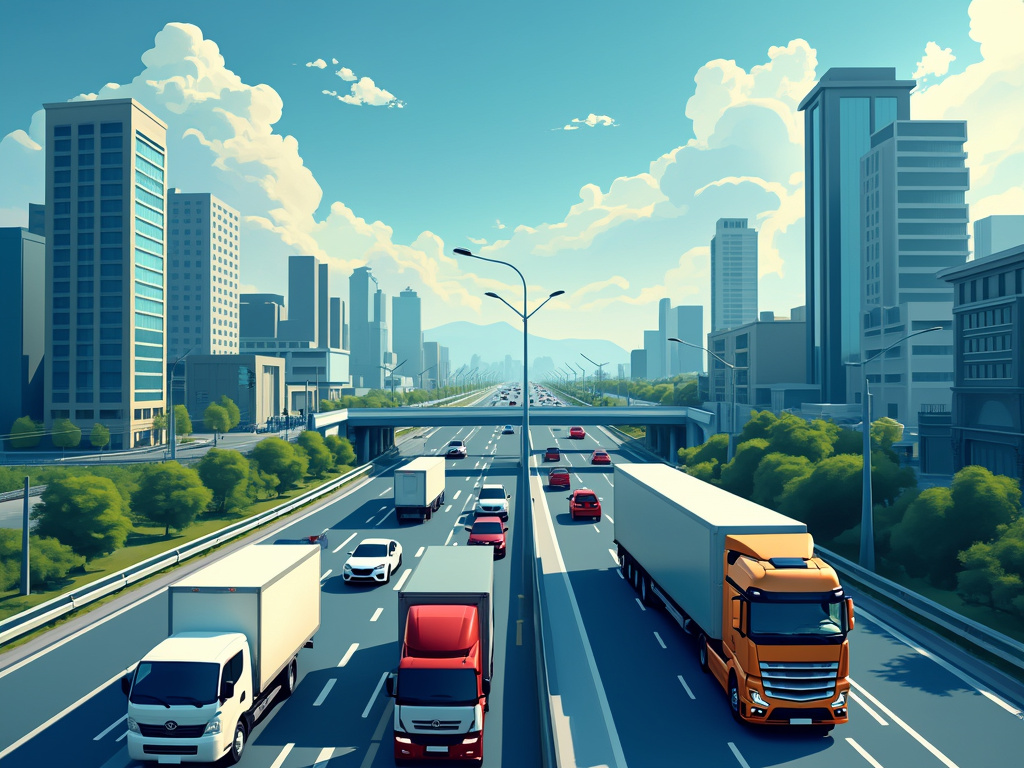A robust and efficient transportation system is crucial for the development and prosperity of any country. It not only facilitates the movement of people and goods but also contributes significantly to the economy, environment, and quality of life. While many countries strive to improve their transportation networks, a few stand out for their world-class systems. This article highlights the top countries with the best transportation systems, based on factors such as infrastructure quality, efficiency, and innovation.
1. Japan
Japan is renowned for its highly efficient and technologically advanced transportation system. The country’s rail network, particularly the Shinkansen or “bullet trains,” is a marvel of engineering and punctuality. These trains, which travel at speeds of up to 320 km/h (199 mph), are known for their precision timing, safety, and comfort. Japan’s urban transportation systems, including the Tokyo Metro, are equally impressive, offering extensive coverage and convenience. The country also excels in road infrastructure, with well-maintained highways and an emphasis on public transportation over private car use.
2. Germany
Germany is often considered the benchmark for transportation systems in Europe. The country boasts an extensive and reliable rail network, with Deutsche Bahn as the national carrier providing high-speed and regional services. Germany’s Autobahn highways are famous worldwide for their efficiency, quality, and sections with no speed limits. The country also invests heavily in sustainable transportation, with a strong focus on cycling infrastructure and public transport in cities like Berlin, Munich, and Hamburg.
3. Switzerland
Switzerland’s transportation system is among the most efficient and integrated in the world. The Swiss Federal Railways (SBB) operates one of the most punctual and reliable rail networks globally, connecting even the most remote areas with precision. The country’s public transportation system is seamlessly integrated, allowing passengers to transition effortlessly between trains, buses, and boats. Switzerland’s commitment to sustainability is also evident in its promotion of public transport, cycling, and walking.
4. Singapore
Singapore is a global leader in urban transportation, known for its highly efficient and modern public transport system. The Mass Rapid Transit (MRT) system is the backbone of public transportation in Singapore, offering clean, fast, and reliable service across the island. The city-state’s bus network is equally efficient, with extensive routes that complement the MRT. Singapore’s government actively promotes the use of public transportation and has implemented innovative policies, such as congestion pricing, to manage traffic and reduce car ownership.
5. Netherlands
The Netherlands is often recognized for its cycling infrastructure, which is arguably the best in the world. The country has over 35,000 km (21,748 miles) of dedicated bike lanes, making cycling a preferred mode of transport for many citizens. In addition to its bike-friendly infrastructure, the Netherlands has a well-developed public transportation system that includes trains, trams, and buses. The Dutch railway network is known for its reliability and extensive coverage, connecting cities and towns efficiently.
6. South Korea
South Korea has made significant strides in developing a world-class transportation system. The country’s high-speed rail service, known as KTX, connects major cities with impressive speed and efficiency. Seoul’s subway system is one of the largest and most efficient in the world, offering a seamless travel experience with modern amenities like Wi-Fi and climate control. South Korea also emphasizes smart transportation solutions, incorporating advanced technologies such as automated fare collection and real-time tracking.
7. France
France is home to one of the most extensive and well-maintained transportation networks in Europe. The country’s TGV (Train à Grande Vitesse) high-speed trains are among the fastest in the world, connecting major cities across the country with speed and comfort. Paris, the capital, boasts an extensive metro system, while the regional TER trains offer efficient connectivity to smaller towns and rural areas. France also prioritizes cycling and walking, with dedicated lanes and pedestrian-friendly city designs.
8. Sweden
Sweden’s transportation system is renowned for its sustainability and efficiency. The country invests heavily in public transport, with an extensive network of trains, buses, and trams that are well-integrated and accessible. Sweden is also a leader in green transportation initiatives, promoting the use of electric vehicles and cycling. Stockholm, the capital, has a well-developed metro system and an extensive network of ferries, buses, and trains that ensure seamless travel across the city and its archipelago.
9. Canada
Canada’s transportation system is one of the best in North America, particularly in urban areas. Cities like Toronto, Vancouver, and Montreal have efficient public transportation networks that include buses, subways, and light rail systems. Canada’s rail network, operated by VIA Rail, offers extensive intercity services, while the country’s highway system is well-maintained and expansive. Additionally, Canada is making significant investments in sustainable transport, with a growing focus on cycling infrastructure and electric vehicle adoption.
10. United Arab Emirates
The United Arab Emirates, particularly Dubai and Abu Dhabi, has developed one of the most modern and futuristic transportation systems in the world. Dubai’s metro system is fully automated, offering clean and efficient service across the city. The UAE has also invested in extensive road networks, with highways that are well-maintained and equipped with smart traffic management systems. The country is also exploring innovative transportation technologies, such as hyperloop and autonomous vehicles, to further enhance its infrastructure.
Conclusion
These countries exemplify what it means to have a world-class transportation system, combining efficiency, innovation, and sustainability. Whether through high-speed rail networks, extensive public transport systems, or advanced technological solutions, these nations have set the standard for how people and goods move. As urbanization and environmental concerns continue to grow, these transportation systems offer valuable lessons for other countries aiming to improve their own infrastructure and mobility solutions.
